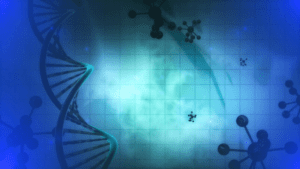Nascent Transcript Writer: Sumantra Chatterjee, PhD
Large scale exome and whole genome sequencing have led to cataloging vast arrays of disease-associated genes and variants for various multifactorial disorders, yet the underlying biology for most of these has been difficult to unravel, leading to diagnostic uncertainty. This has been partly due to our incomplete knowledge of the multiple layers of interactions in the genome which influence the phenotype. Understanding the full spectrum of these changes would require us as a community to be a broad church and welcome into the tent, scientist with varied skill sets to tap into the diverse methods and techniques.

An area of research which has revolutionized the study of human genetics is bioinformatics and data analysis. As we continue to sequence millions of people in various projects like the UK Biobank and TOPMed, it is imperative that we analyze the data in a principled manner by using proper controls and after a proper qualification of phenotypes. These projects will help us set benchmarks for the community to follow and will lead to the development of multiple analysis tools and rigorous statistical tests, which collectively will ensure rigor in all our future analyses. This will also help us extract useful information for individual patients to understand community health. Beyond sequencing and variant detection, our ability to engineer the genome in cells and model organisms with specific mutations has been the real innovation. We are now able to use CRISPR/Cas9 to test which of these mutations leads to the disruption of cellular processes and ultimately the phenotype. Specific examples of this approach are seen in efforts to classify multiple variants in the BRCA1 gene (Nature.562(7726):217-222, 2018) and the DMD gene (Sci Adv. 4(1):eaap9004, 2018), among others. These studies have increased our repertoire of functional variants in various disorders and have also provided potentially actionable targets.
This ability to engineer the genome has also allowed us to incorporate structural biology and high-resolution microscopy in our efforts to understand the functional consequences of various mutations. This has allowed us to have an unprecedented look at how specific variants cause misfolding of proteins as well as how mutations at the interaction interface of certain proteins disrupt protein-protein and protein-DNA interactions. These types of studies help us classify the severity of variants based on which protein function they are disrupting. Similarly, studies with high-resolution microscopy reveal how various mutations affect protein localization and how the accumulation of mutant proteins affect cellular processes. These studies are especially critical for complex disorders where we have multiple variants with small effects and now for the first time we can address their cumulative effects on the disease.
We are living in an exciting time for human genetics—we have started looking beyond the DNA sequence and started asking fundamental questions about the functional nature of various genomic changes we discover. These forays into functional genomics have allowed us to incorporate knowledge from various biological disciplines and have made us a more diverse and vibrant community. The challenge will be to keep reinventing ourselves and incorporating new knowledge and skills as we go towards a more complete understanding of human diseases.
